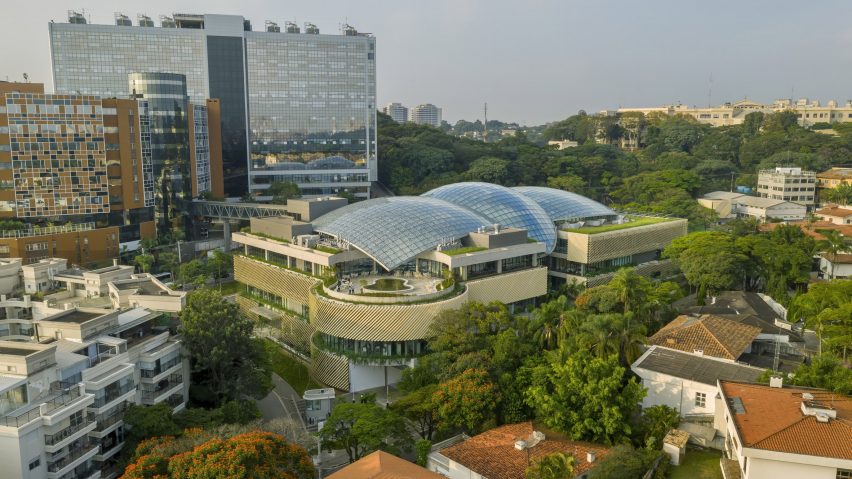
Safdie Architects vaults glass atrium over indoor garden at São Paulo medical centre
Safdie Architects has oriented a medical centre in Brazil around a massive atrium with a glass ceiling that was designed to evoke "the feeling of being under a tree canopy".
Safdie Architects, working with executive architect Perkins+Will, created The Albert Einstein Education and Research Center (AEERC) to house a medical school as well as research facilities.
The center is part of the private hospital Sociedade Beneficente Israelita Brasileira Albert Einstein, which is located across the street and connected to the new building by a walkway.
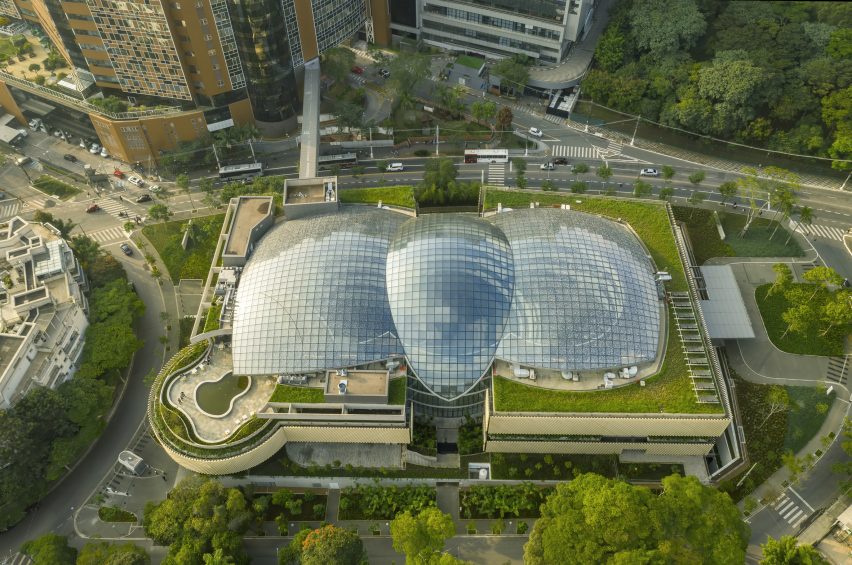
The 12,000-square-metre AEERC building is distinguished by a large atrium with a vaulted glass ceiling.
Forming a dome that rests above the roof, the ceiling spans 3,800 square metres and is made up of 1,854 panels of fritted glass laid over a steel grid.
"We were looking for the lightest structure to efficiently span between the two wings of the building and bring light into the garden," said Safdie Architects partner Sean Scensor.
"The overlapping domes, engineered as a thin steel lattice, turned out to be the most elegant solution to the problem."
This glass is ultra-transparent and was designed with minimum reflectivity in order to avoid disturbing exterior reflections.
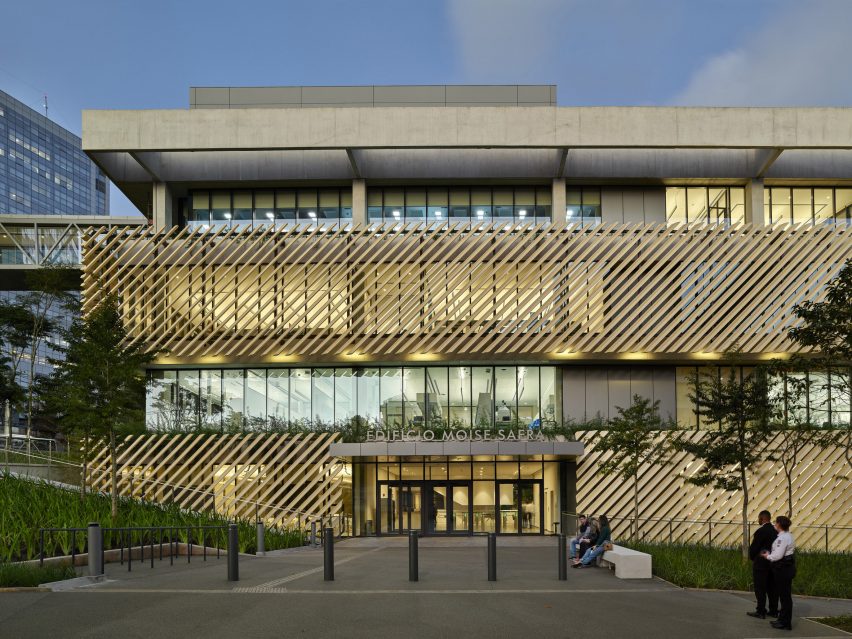
The glass panels used for the ceiling were micro-perforated to absorb internal noise and have a pattern of translucent dots that vary in concentration, depending on the levels of average sun exposure, to provide optimal shade.
"As seen from below, the overlapping layers of dots is like seeing dappled sunlight through the overlapping leaves of a tree, evoking the feeling of being under a tree canopy," said Safdie Architects.
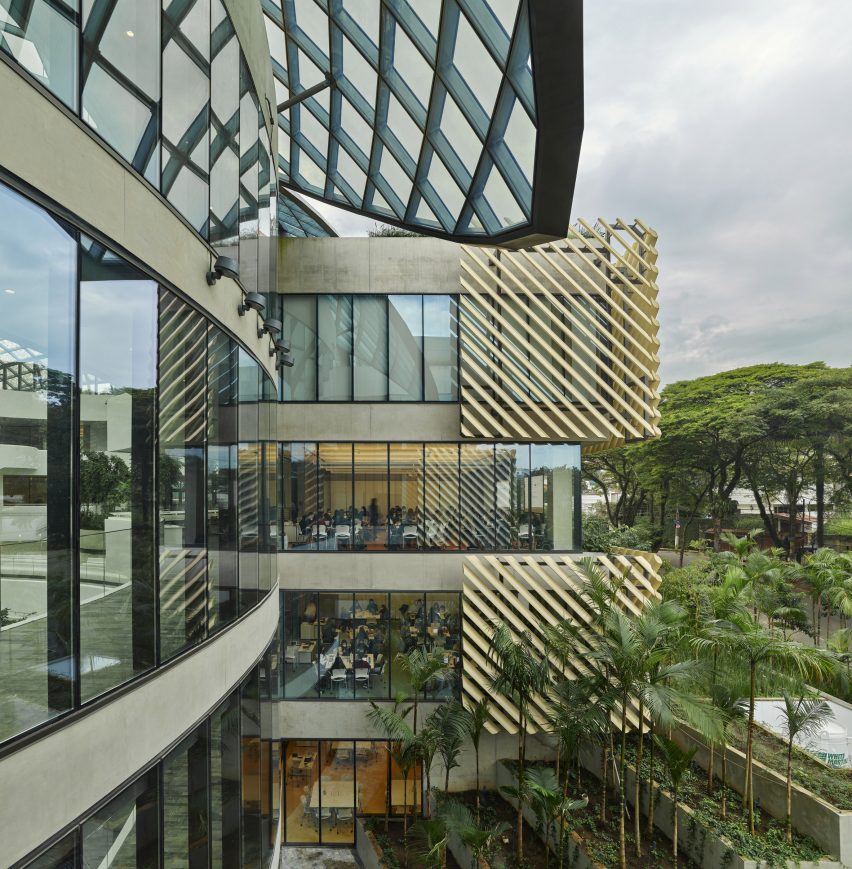
The facade of the five-storey building, which is made of concrete and full-height glass, is partly covered in resin louvres. These function as a brise soleil, keeping sun away from the exterior envelope of the structure.
The direction of the resin louvres varies throughout.
"The airfoil shape of the louvers, as well as their angle and spacing, was developed using computer sun studies, tested with full scale physical models," said the architecture studio.
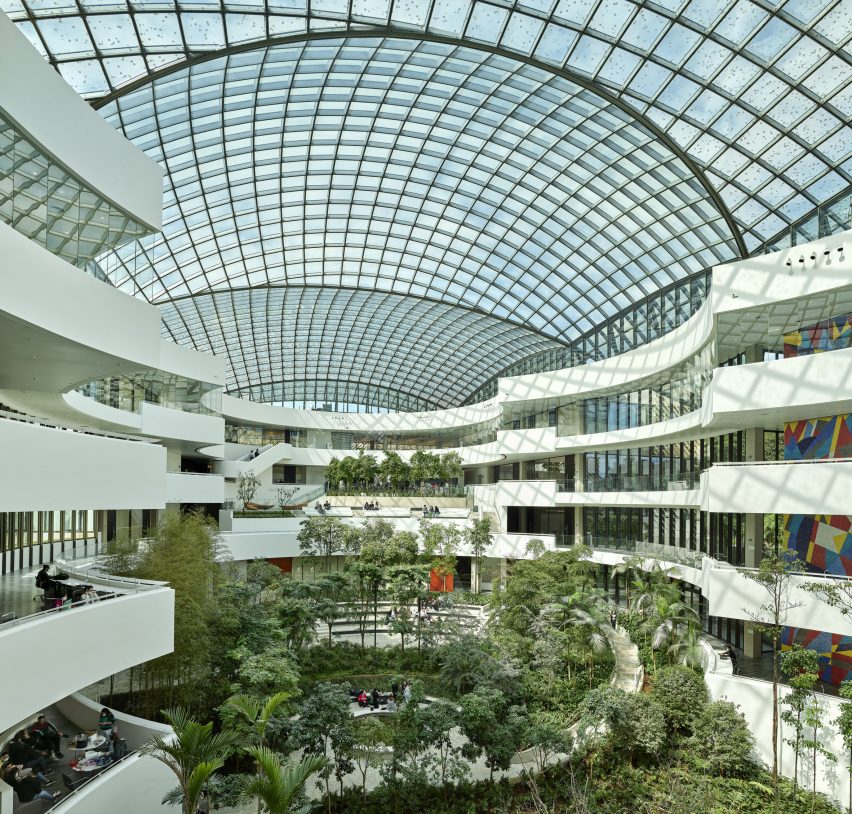
Inside the building, classrooms and walkways hug the sides of the structure, leaving space in the middle for the atrium.
This features an expansive garden designed in collaboration with Brazilian landscape architect Isabel Duprat.
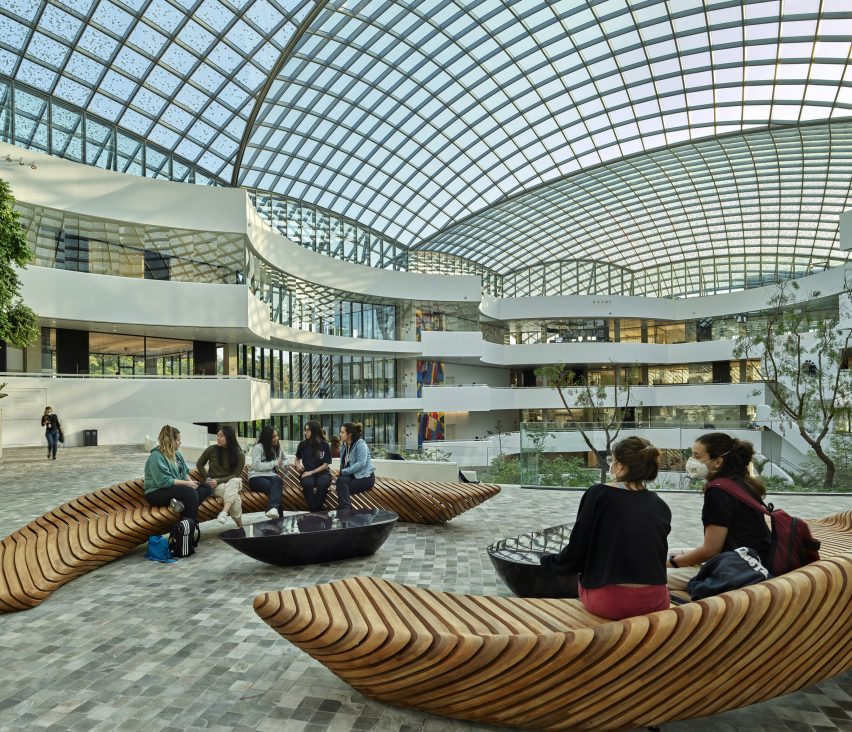
Foliage extends from the entryways at ground floor level to the centre of the open area, which is stepped down to form a central meeting point as well as a tree-planted terrace.
The cobblestone flooring in the atrium is made of local quartzite that references the ground of public squares in São Paulo, according to the architecture studio.
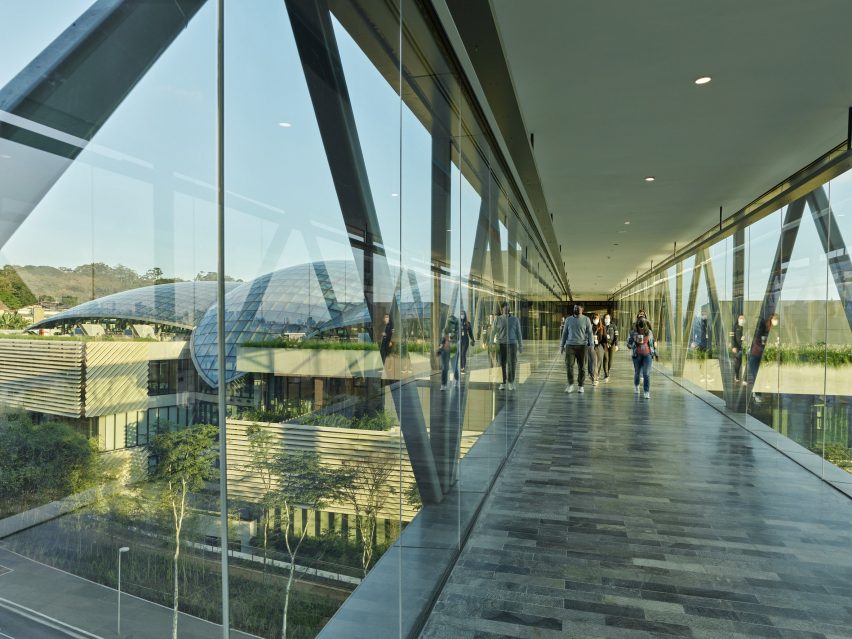
"While the exterior is scaled to be discrete, the spacious multilevel garden at the heart of the center feels like an unexpected discovery: bright, inviting, and inspiring," said Scensor.
Beyond the atrium, the center is organized into two wings. The east wing holds many of the teaching spaces, while the west is oriented towards research.
The classrooms have floor-to-ceiling glass windows with views of the louvres outside and floors made of wood or natural rubber.
On the upper levels, connecting walkways form mezzanines that overlook the atrium and have additional seating. The top floor has a circular terrace that branches off from the main structure, creating a green outdoor space for users.
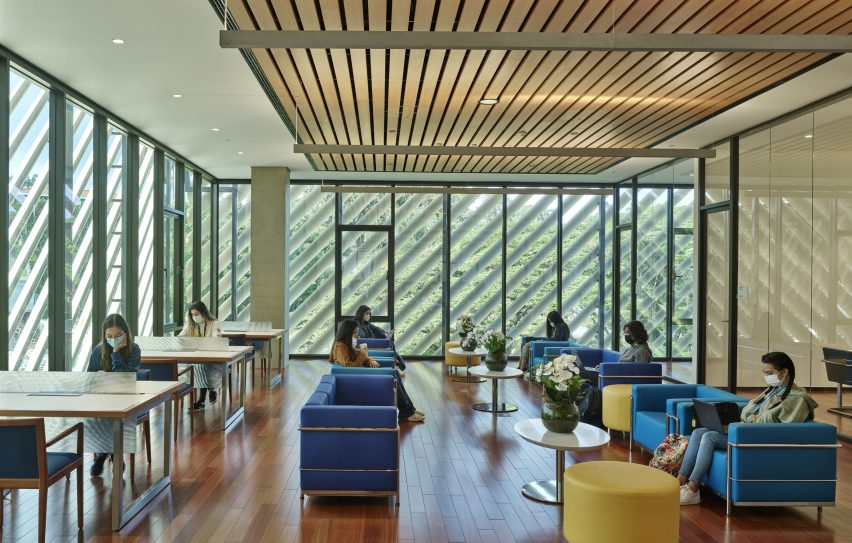
Construction for AEERC began in 2017 and was completed in June 2022. The school will open in August 2022.
Safdie Architects was founded in Montreal in 1964 by Israel-born Moshe Safdie, and the practice is now based in Boston.
Safdie is well-known for his installation for the cubic social housing project Habitat 67, created for the 1967 World Expo in Montreal.
More recently, the studio has designed a series of skyscrapers with a "horizontal skyscraper" laid across them in China.
Other projects that include massive glass atriums include Safdie's design for the Singapore airport, where the atrium opens in the centre to make way for a waterfall.
The photography is by Timothy Hursley.